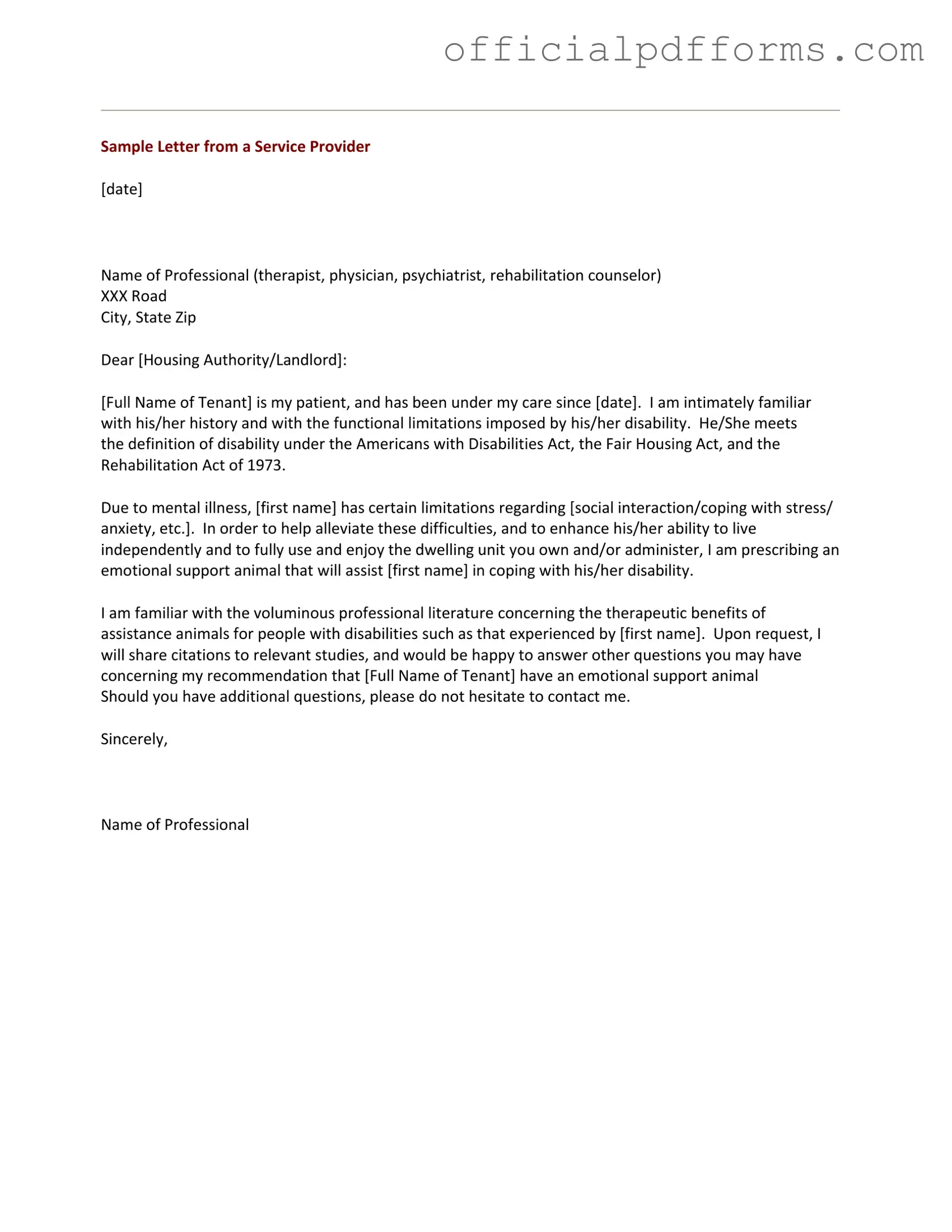What is an Emotional Support Animal Letter?
An Emotional Support Animal (ESA) letter is a document written by a licensed mental health professional. This letter confirms that an individual has a mental health condition and that an emotional support animal is necessary for their well-being. Unlike service animals, ESAs provide comfort and support through companionship, rather than performing specific tasks related to a disability.
Who can write an ESA letter?
Only licensed mental health professionals can write an ESA letter. This includes psychologists, psychiatrists, licensed clinical social workers, and licensed professional counselors. It is important that the professional has a thorough understanding of the individual’s mental health needs and can validate the necessity of the emotional support animal.
An effective ESA letter should include the following information:
-
The mental health professional's letterhead, including their contact information and license details.
-
The date the letter was issued.
-
A clear statement that the individual has a mental health condition.
-
A declaration that the emotional support animal is necessary for the individual's mental health.
-
The type of animal and, if applicable, its name.
This information helps to ensure that the letter is taken seriously by landlords, airlines, and other entities that may require it.
Do I need to register my emotional support animal?
No formal registration process exists for emotional support animals in the United States. However, having an ESA letter is essential. This letter serves as proof of the animal's status and may be required by landlords or airlines. While some organizations may offer registration services, these are not necessary and do not provide any legal benefits.
Can my landlord refuse to accept my ESA letter?
Landlords are generally required to accommodate emotional support animals under the Fair Housing Act. However, they can refuse if the animal poses a direct threat to the health and safety of others or if the individual has not provided a valid ESA letter. If a landlord questions the legitimacy of the letter, they may request additional documentation, but they cannot demand a specific registration or certification.
How do I obtain an ESA letter?
To obtain an ESA letter, an individual should follow these steps:
-
Schedule an appointment with a licensed mental health professional.
-
Discuss your mental health condition and how an emotional support animal can help.
-
If deemed appropriate, request the ESA letter during or after the appointment.
It’s crucial to ensure that the mental health professional understands the legal requirements surrounding ESA letters to provide a valid document.
